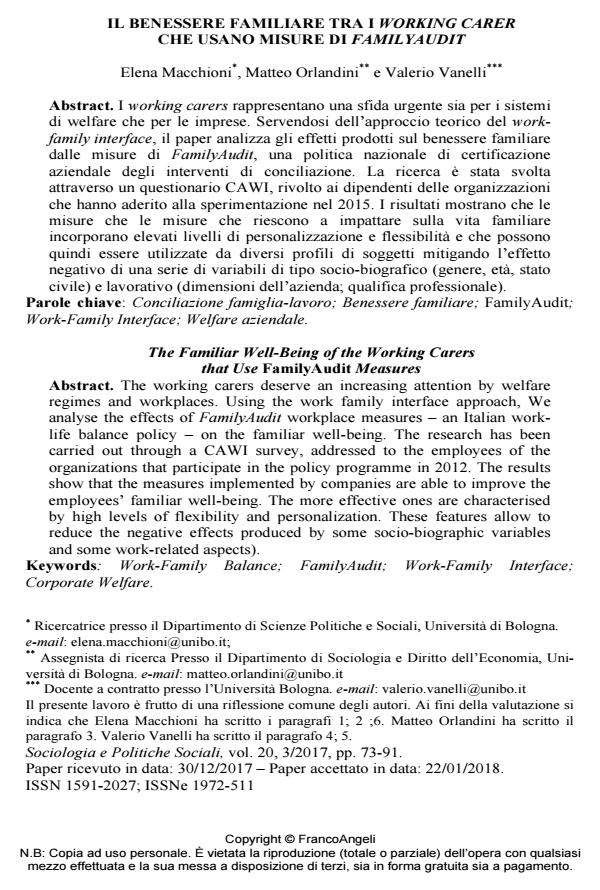The Familiar Well-Being of the Working Carers that Use FamilyAudit Measures
Journal title SOCIOLOGIA E POLITICHE SOCIALI
Author/s Elena Macchioni, Matteo Orlandini, Valerio Vanelli
Publishing Year 2018 Issue 2017/3
Language Italian Pages 19 P. 73-91 File size 269 KB
DOI 10.3280/SP2017-003005
DOI is like a bar code for intellectual property: to have more infomation
click here
Below, you can see the article first page
If you want to buy this article in PDF format, you can do it, following the instructions to buy download credits

FrancoAngeli is member of Publishers International Linking Association, Inc (PILA), a not-for-profit association which run the CrossRef service enabling links to and from online scholarly content.
The working carers deserve an increasing attention by welfare regimes and workplaces. Using the work family interface approach, We analyse the effects of FamilyAudit workplace measures - an Italian worklife balance policy - on the familiar well-being. The research has been carried out through a CAWI survey, addressed to the employees of the organizations that participate in the policy programme in 2012. The results show that the measures implemented by companies are able to improve the employees’ familiar well-being. The more effective ones are characterized by high levels of flexibility and personalization. These features allow to reduce the negative effects produced by some socio-biographic variables and some work-related aspects).
Keywords: Work-Family Balance; FamilyAudit; Work-Family Interface; Corporate Welfare.
Elena Macchioni, Matteo Orlandini, Valerio Vanelli, Il benessere familiare tra i Working Carer che usano misure di Familyaudit in "SOCIOLOGIA E POLITICHE SOCIALI" 3/2017, pp 73-91, DOI: 10.3280/SP2017-003005